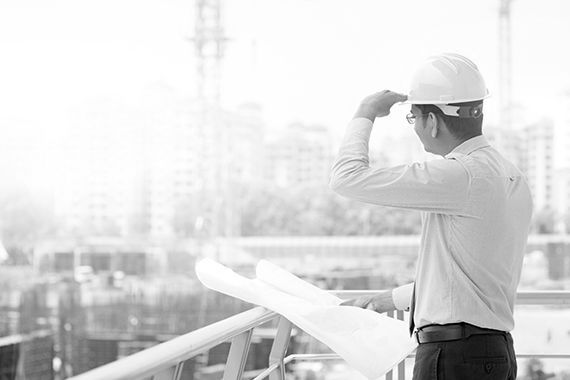
Le surveillant de chantier;
Le surveillant est un ingénieur chargé par le Ministère de surveiller et d’inspecter les travaux, de donner des avis professionnels sur ces derniers, de procéder à des mesurages et à des tracés, de préparer des rapports et des calculs en vue d’attester de la conformité des travaux, de recommander le paiement des ouvrages et de recevoir les travaux.
Rôles et fonctions
Le surveillant planifie et coordonne le déroulement de l’activité de surveillance en établissant les objectifs à atteindre, ainsi que les moyens et les ressources nécessaires à sa réalisation. Il suit le déroulement des activités afin d’en assurer la réalisation. Il établit et maintient de bonnes relations avec l’équipe de surveillance, le gérant de projet, les concepteurs et l’entrepreneur, compose avec eux et établit un climat favorable. Il analyse des problèmes, des questions ou des situations. Il recueille, organise et traite l’information de manière logique et systématique. Il dégage des options réalistes et judicieuses en évaluant les avantages et les inconvénients afin de retenir la solution qui convient le mieux.
Il est donc responsable de la surveillance des travaux dans leurs aspects qualitatifs, quantitatifs et administratifs. Le surveillant ordonne les étapes de surveillance et établit les échéances générales de réalisation. Ces échéances seront par la suite révisées en fonction du calendrier des travaux de l’entrepreneur. Il prépare également l’organigramme hiérarchique de surveillance et organise le plan de communication, ce qui inclut la circulation de l’information entre le surveillant, l’équipe de surveillance et le gérant de projet, ainsi que le système de codification et de classement des documents du chantier. Le surveillant est aussi le seul interlocuteur auprès de l’entrepreneur. Toutes les communications à l’entrepreneur doivent donc transiter par le surveillant.
Il est donc responsable de la surveillance des travaux dans leurs aspects qualitatifs, quantitatifs et administratifs. Le surveillant ordonne les étapes de surveillance et établit les échéances générales de réalisation. Ces échéances seront par la suite révisées en fonction du calendrier des travaux de l’entrepreneur. Il prépare également l’organigramme hiérarchique de surveillance et organise le plan de communication, ce qui inclut la circulation de l’information entre le surveillant, l’équipe de surveillance et le gérant de projet, ainsi que le système de codification et de classement des documents du chantier. Le surveillant est aussi le seul interlocuteur auprès de l’entrepreneur. Toutes les communications à l’entrepreneur doivent donc transiter par le surveillant.
Le surveillant peut déléguer certaines tâches techniques ou administratives, mais il garde toute la responsabilité qui lui a été confiée à titre de surveillant des travaux. Une tâche doit être déléguée qu’à une seule personne à la fois. La coordination, la fiabilité des résultats et la responsabilité inhérente aux décisions incombent donc au surveillant, et ce, même si certaines tâches comme le contrôle de la qualité sont accomplies par une autre entité. À ce titre, le surveillant s’assure que les documents à conserver et produits par les membres de l’équipe de surveillance sont versés au dossier de chantier.
Le surveillant et son représentant doivent signer les documents suivants :
- plan de surveillance;
- journal de chantier;
- rapport de variation des quantités.
** Circulation sur les chantiers :
La présence de divers véhicules en mouvement, les nombreux déplacements piétonniers et aires de travail à proximité des équipements, les multiples manœuvres à exécuter, la visibilité réduite, les manœuvres de recul… Voilà quelques-uns des facteurs pouvant entrainer des dangers lors de la cohabitation des piétons et des équipements lourds sur les chantiers, et accroître considérablement les risques d’accident s’ils ne sont pas gérés adéquatement.
Le surveillant et son représentant doivent signer les documents suivants :
- plan de surveillance;
- journal de chantier;
- rapport de variation des quantités.
** Circulation sur les chantiers :
La présence de divers véhicules en mouvement, les nombreux déplacements piétonniers et aires de travail à proximité des équipements, les multiples manœuvres à exécuter, la visibilité réduite, les manœuvres de recul… Voilà quelques-uns des facteurs pouvant entrainer des dangers lors de la cohabitation des piétons et des équipements lourds sur les chantiers, et accroître considérablement les risques d’accident s’ils ne sont pas gérés adéquatement.
